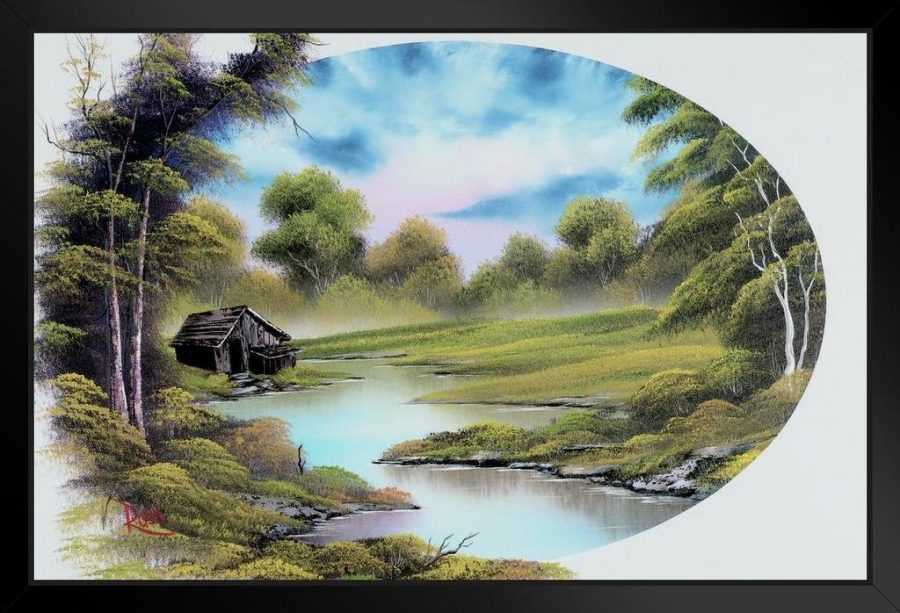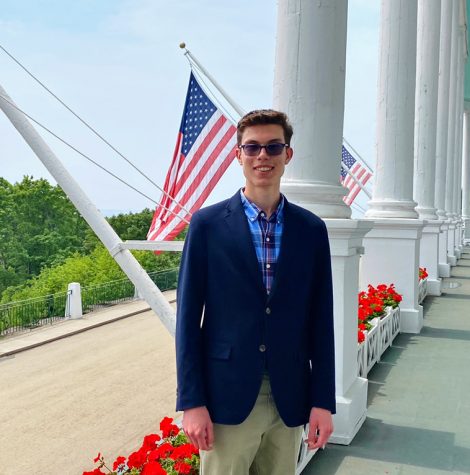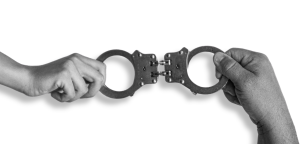A Bob Ross painting adventure
Original painting by Bob Ross, provided by Two Inch Brush.
December 19, 2019
Bob Ross is widely known as a highly skilled and extremely talented painter, thanks in part to his show, “The Joy of Painting.” But just how well does this instructional show teach its audience to paint?
I set out to complete the onerous task of painting along with Ross to see if such a prospect was even remotely achievable. As a general rule, I would not be allowed to pause or rewind. I would have to follow along exactly as Ross said and see the end result based on the supplies I had available after a brief trip to a craft store. What obstacles would I have to overcome? How difficult would keeping up with Ross’s pace be? I was determined to find out.
After deciding on the painting “Lakeside Cabin,” I assembled the paints, canvas and everything else. My first problem was that I was using an incorrectly sized canvas as well as having a relatively limited amount of colors to choose from. Ross, well known for using colors like “Phthalo Green” and “Prussian Blue,” also had a much greater palette and selection to choose from. Painting the sky was relatively bearable; it called for simple back-and-forth strokes of the brush and then lots of blending. However, clouds proved difficult to create using this technique. It was remarkable how Ross could effortlessly move his brush and, in only a minute, have an unparalleled sky. This is where the struggle increased tenfold.
Faster than the blink of an eye, Ross created a lake from nothing. He then moved on to some ‘happy little trees.’ With one stroke of the brush, a beautiful, amazingly realistic tree was born. I found it surprisingly fun and not too difficult to build these background trees themselves. However, Ross is famous for his unique use of highlights to create scenes that stand out. Using highlights without ruining the original intent of the object ended up being one of the most arduous endeavors I have ever attempted.
But that was nothing compared to the cabin. Buildings and people are especially rare in Ross’s multitude of paintings. Instead, landscapes of mountains, flora and other natural scenes are far more common. I managed to create nothing more than an off-color, brown, amorphous blob. After an obscenely long amount of time, the blob-shaped itself into something more geometric. Once again, highlights proved difficult because of the size of the cabin on my canvas.
Lastly came a large tree and an adjacent path. At this point, I was about a minute behind what was playing on the video. This was mostly due to how long it took me to reflect certain objects using a specific brush technique, much as Ross had executed. I was able to create the path in a fairly good size, but the texture and color just seemed strange and off. Rushing through this part, I quickly painted a large tree and colored it well. However, this means little because all other sections’ colors were entirely inaccurate.
Still, I managed to overcome these daunting problems, albeit at the expense of some of my sanity. I thought the result was entirely inadequate, but when I came back to look at it the day after, I saw it in a new way. My imitative painting managed to turn itself into an artistic masterpiece. Some who haven’t yet attempted this feat and have retained their sanity might claim this painting is riddled with mistakes. I, however, have come to the conclusion that all this is is a ‘happy little accident.’









